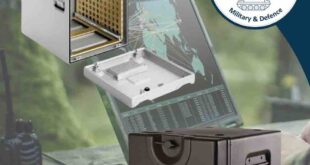Nina Samodajev examines the growing use of advanced high strength steel (AHSS) to reduce vehicle mass
One of the biggest focusses in the automotive industry today is the reduction of weight to maximise passenger safety and overall vehicle performance.
Since the 1920s, steel has been the material of choice for automakers worldwide. Today, steel makes up around 65% of an average automobile’s weight and is the backbone of the entire vehicle. On average, that is 900kg of steel used per vehicle.
In order to enhance passenger safety and vehicle performance, reducing the weight of vehicles has become the top priority for the automotive industry today.
Advanced High Strength Steel (AHSS) is the fastest growing material in today’s automotive industry and the key material when it comes to vehicle mass reduction.
In general, AHSS are steels with yield strengths higher than 550 megapascals (MPa). They offer low weight, high strength and optimised formability, which allows automakers to use less material, greatly reducing a vehicle’s weight.
Steel development
The properties of steel have significantly improved over the last century, from mild steel in the early 1900s to high strength low alloys (HSLA) in late 1970s and the introduction of the first generations of Advanced High Strength Steel (AHSS) in the 1990s.
In the last two decades, the steel industry has developed different alloying and processing combinations to produce steel microstructures providing higher strength for reduced steel section size and weight.
To create the impressive combination of high tensile strength and ductility, carefully selected chemical compositions and the multiphase microstructures of AHSS are designed to help the automotive industry meet low weight requirements.
AHSS are not significantly lighter than traditional steels, but their strength allows automakers to manufacture very thin gauges, thus reducing the weight of the vehicles.
Traditional mild steel
Mild or low carbon steels are steels with a tensile strength of 400 MPa and carbon content of 0.05 to 0.25%.
The microstructure of mild steel causes it to be relatively ductile and easy to form, being comprised of one phase, normally ferrite. Mild steels are commonly used in the body structure and trunk closures of vehicles.
High strength steel
High strength low alloy (HSLA) steels were the first commonly used high strength steels in the automotive industry. These steels have higher tensile strengths of up to 800 MPa. They are not made to meet a specific chemical composition but rather specific mechanical properties. They have a low alloying and carbon content to retain formability and weldability, with copper, titanium, vanadium, and niobium added for strengthening purposes.
HSS steels have been used in the areas of vehicles where energy absorption is important, such as crumple zones.
The principal difference between conventional HSS and AHSS is in their microstructure. AHSS are multiphase steels with complex microstructures that contain phases such as ferrite, martensite, bainite and austenite.
The generations of AHSS
The first generation of the AHSS family includes dual phase (DP), complex-phase (CP), martensitic (MS) and regular transformation-induced plasticity (TRIP).
This first generation has more formability than HSLA at the same strength level. This is due to its multiphase microstructure, which contains ferritic and martensitic phases for a balance between formability and strength. The unique microstructure is created by special heat treatments.
The second generation of AHSS includes a new generation of transformation-induced plasticity (TRIP), hot-formed (HF), and twinning-induced plasticity (TWIP) steels.
Both the first and second generation of AHSS are designed to meet the functional performance demands of certain parts in the automotive industry.
The first generation of AHSS has very limited formability. The formability of the second generation is significantly higher than the first, however, because of the high cost of alloying elements, they are very expensive. Therefore, the third generation of AHSS is currently under development. These steels are aimed to have improved strength-ductility ratios and are expected to achieve over 35 per cent in structural weight reduction.
Since the metallurgy of AHSS grades is still a new field compared to conventional HSS, only two types of the third generation AHSS are currently in production.
The significance of AHSS
AHSS are now used for nearly every new vehicle design. They are predicted to replace approximately 60% of currently used conventional HSS.
Since AHSS can be manufactured at very thin gauges and maintain the same strength as mild steels, designers can easily replace conventional steels with AHSS. This is not the case when replacing steel with other lightweight materials, such as aluminium or fibre-reinforced composite materials.
These non-ferrous materials are expensive, incompatible with existing manufacturing processes and have higher production and manufacturing costs.
Cost-benefit analysis shows that steel parts are stronger and cheaper than other lightweight materials. The most popular lightweight material in competition with steel is aluminium.
Although aluminium used in the automotive industry has been rising modestly, body structures fabricated with aluminium cost 60% to 80% more than steel.
The future of AHSS
New grades of AHSS are making vehicle body structures lighter by 25 to 39% compared with conventional steels. When applied to a typical five-passenger family vehicle, the total weight of the vehicle can be reduced by 170 to 270kg.
Vehicle weight reduction is also a crucial factor for fuel efficiency. Using a lower amount of steel per vehicle reduces both material and fuel costs, thus profiting the environment.
Simply put, if automakers were to use steel with a tensile strength of 1000MPa instead of 500MPa, steel consumption would be reduced by half.
The Matmatch materials database is designed so that engineers, product designers and materials specialists can quickly find their perfect supply partner.
Nina Samodajev is a process engineer at Siemens Gamesa and writing on behalf of materials database Matmatch.
 Engineer News Network The ultimate online news and information resource for today’s engineer
Engineer News Network The ultimate online news and information resource for today’s engineer





